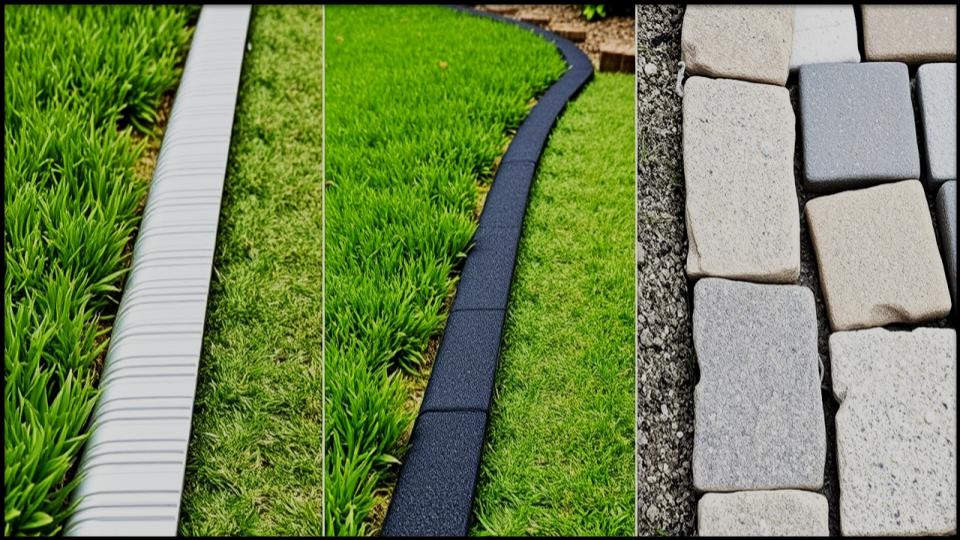
A garden should be a sanctuary, a place of peaceful retreat and creative expression. You’ve spent hours planning, planting, and nurturing it into your personal Eden. But then, a silent, relentless invasion begins. First, it’s a single, unfamiliar sprout. Soon, a sprawling network of Neighbor’s Weeds Creeping infiltrates your prize-winning peonies. When you realize these unwelcome guests are staging their coup from next door, it can be incredibly frustrating. Learning how to stop neighbor’s weeds is not just about garden maintenance; it’s about reclaiming your hard-earned tranquility. This guide will walk you through the expert-approved, layered strategies to create a beautiful, resilient border.
Quick Tips: Reclaiming Your Garden Border
Short on time? Here are the essential strategies to keep your garden free from your neighbor’s encroaching weeds:
- Install a Deep Physical Barrier: A solid barrier installed at least 6-8 inches deep is the most effective way to stop invasive roots.
- Create a “No-Weed Zone”: Maintain a clear, mulched, or gravel buffer strip at least a foot wide along the property line.
- Plant Densely: Use robust perennials and groundcovers on your side of the border to outcompete any weeds that manage to sprout.
- Communicate Kindly: A friendly conversation with your neighbor can often lead to a simple, collaborative solution.
Understanding the Invasion: Why Their Weeds Become Your Problem
To effectively defend your garden, you must first understand your adversary. Weeds are masters of survival and propagation, and they don’t respect property lines. They primarily travel in two ways: by seed and by root.
- Seed Dispersal: Weeds like dandelions and thistles produce thousands of lightweight seeds that are carried by the wind, landing wherever they please—including your freshly prepared soil.
- Creeping Root Systems: This is often the more challenging issue. Aggressive perennial weeds, such as bindweed, quackgrass, and creeping Charlie (Glechoma hederacea), spread through extensive underground root systems called rhizomes. These roots can travel many feet, popping up new plants far from the parent. A simple fence does nothing to deter them.
In my own garden, I’ve battled a particularly tenacious patch of quackgrass from an adjacent wild area. I learned firsthand that simply pulling the tops is a futile effort; the only lasting solution is to address the underground network. It’s a common mistake I see gardeners make—focusing only on what’s visible above the soil.
The First Line of Defense: How to Block Weeds with Physical Barriers
The most powerful strategy in your arsenal for garden border protection is creating a physical, impenetrable line of defense. Think of it as building a fortress wall for your garden’s foundation.

Installing Deep Edging
Surface-level decorative edging won’t cut it for how to block weeds from neighbor’s yard. You need to go deeper. The goal is to install a continuous, solid barrier that extends deep enough into the soil to block those questing roots.
I recommend a depth of at least 6 to 8 inches for most common creeping weeds. For particularly aggressive culprits like bamboo or running grasses, you may even need to go 12 inches deep.
- Material Matters: Choose a material that is durable and won’t decay underground. Galvanized or corten steel, heavy-duty recycled composite, and thick plastic root barriers are all excellent choices. While more labor-intensive, a poured concrete curb or a carefully constructed masonry wall is a beautiful and permanent solution.
- Installation is Key: Dig a clean trench along the property line. Ensure the edging is installed so that about one inch remains visible above the soil line. This helps prevent windblown seeds from finding purchase and makes trimming easier. Backfill the trench firmly on both sides to ensure there are no gaps for roots to exploit. According to guidance from the University of New Hampshire, a properly installed root barrier is a one-time investment that pays dividends for years.
Tools and Materials for Barrier Installation
- Spade or Trenching Shovel: For digging a clean, narrow trench.
- Edging Material: Your choice of steel, composite, or plastic barrier.
- Rubber Mallet: To gently tap the edging into place without damaging it.
- Level: To ensure a straight and even installation.
- Work Gloves: To protect your hands.
Cultivating a Weed-Resistant Border: A Proactive Approach
A physical barrier is your best defense, but a strong offense makes it even more effective. This means creating conditions on your side of the border that are inhospitable to weeds.
The Art of Strategic Mulching
Never underestimate the power of a thick layer of mulch. A 2-to-3-inch layer of high-quality mulch does two critical things: it smothers any weed seeds that land on the surface, and it blocks the sunlight they need to germinate. For border defense, I prefer dense, long-lasting mulches.
My go-to is double-shredded hardwood or cedar mulch because it knits together, forming a mat that is difficult for weeds to penetrate. For a truly elegant look, you could also use a layer of pea gravel or river stone over a high-quality landscape fabric.

Planting a Living Barrier
One of the best ways to outcompete weeds is to give them no room to grow. By densely planting robust perennials and groundcovers along the border, you create a “living mulch” that shades the soil and uses up available water and nutrients.
Choose vigorous plants that will thrive in your specific conditions. Excellent choices for a defensive border planting include:
- Hostas: Their large, overlapping leaves create dense shade.
- Daylilies (Hemerocallis): They form thick clumps that are very difficult for weeds to infiltrate.
- Creeping Thyme or Sedum: For hot, sunny borders, these groundcovers form a tight, beautiful mat.
- Ostrich Ferns (Matteuccia struthiopteris): In shady spots, these ferns spread to form a dense, lush colony.
The Neighborly Approach: Cultivating Goodwill Along the Fence
Before you invest in a major project, consider the simplest solution of all: a conversation. Often, your neighbor may not even be aware of the problem. Approaching the situation with kindness rather than frustration can preserve goodwill and may even lead to a collaborative solution.
Wait for a relaxed moment and start the conversation gently. Instead of saying, “Your weeds are ruining my garden,” try something like, “I’m working on my garden border and noticed some really tough weeds coming through. I think they might be bindweed. Have you had trouble with it too?”
This opens the door for a shared problem-solving approach. You could offer to help them clear the weeds on their side of the fence or share information about effective control methods. As noted by many mediation services, framing a problem as a shared challenge rather than an accusation is always more productive.
A Garden Border You Can Be Proud Of
Creating a weed-free border is not a single-afternoon task but a strategic approach to garden design and maintenance. By combining a strong physical barrier with smart horticultural practices like mulching and dense planting, you can effectively halt the invasion of your neighbor’s weeds. Remember to complement these efforts with open, friendly communication. Now you are ready to stop managing a constant problem and start enjoying the beautiful, serene garden sanctuary you’ve always envisioned.
